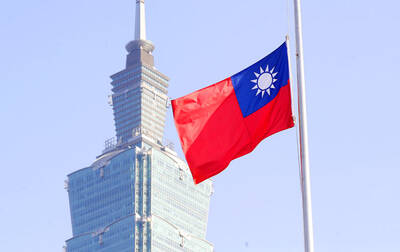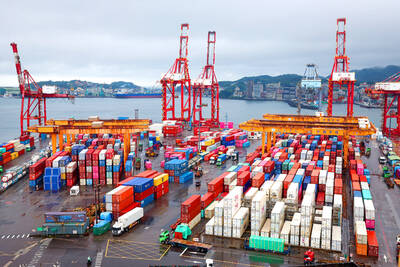Cisco Systems Inc might be doing a little better than Wall Street expects, considering its technology and sales challenges. However, that does not mean the company is set to avoid layoffs in the coming months.
On Wednesday, Cisco released fourth-quarter earnings that illustrated its troubles as one of the tech industry’s giants competing in a rapidly changing environment. In a conference call with investors and analysts, Cisco executives said the company planned to cut up to 6,000 jobs, or 8 percent of its workforce. They offered no specific timeline for the cuts.
Fourth-quarter revenues, Cisco said, were US$12.36 billion, down from the US$12.42 billion seen in the same quarter a year ago. Net income was US$2.25 billion, or US$0.43 a share, down from the US$2.27 billion posted a year ago.
Using non-standard accounting common to many tech companies, Cisco had fourth-quarter net income of US$2.8 billion, or US$0.55 a share.
The results from the quarter were slightly higher than the US$12.14 billion in revenue, and per-share earnings of US$0.53 projected by a survey of analysts by Thomson Reuters.
Cisco’s chief executive John Chambers was a star salesman at IBM Corp early in his career. He has long sought to move Cisco toward the kind of software and business consulting that saved IBM when its computer hardware business stumbled in the early 1990s. In Cisco’s case, the goal is to sell governments and companies on developing new kinds of large, sensor-rich networks.
However, while this direction holds promise, it has yielded relatively little business. Cisco has also been pushing the “Intercloud,” a kind of high-performance series of cloud-computing systems.
“Cloud is an area where we are making significant investments to fuel our future growth,” Chambers said in the call, adding that significant earnings from this would not be coming any time soon.
The price of Cisco shares fell about 1.4 percent in after-hours trading.
“We are executing well in a tough environment,” Chambers said in a statement. The company’s business focus, he said, is in areas like “security, data center, software, cloud and Internet of everything,” or sensor-rich networks. All of these areas are growing quickly, and tend to be highly profitable.
While business in emerging markets and with traditional communications service providers continues to be weak, he said, growth in new areas such as advanced computer servers for data centers was encouraging.
“We’re far from finished,” Chambers said.

ELECTRONICS BOOST: A predicted surge in exports would likely be driven by ICT products, exports of which have soared 84.7 percent from a year earlier, DBS said DBS Bank Ltd (星展銀行) yesterday raised its GDP growth forecast for Taiwan this year to 4 percent from 3 percent, citing robust demand for artificial intelligence (AI)-related exports and accelerated shipment activity, which are expected to offset potential headwinds from US tariffs. “Our GDP growth forecast for 2025 is revised up to 4 percent from 3 percent to reflect front-loaded exports and strong AI demand,” Singapore-based DBS senior economist Ma Tieying (馬鐵英) said in an online briefing. Taiwan’s second-quarter performance beat expectations, with GDP growth likely surpassing 5 percent, driven by a 34.1 percent year-on-year increase in exports, Ma said, citing government

‘REMARKABLE SHOWING’: The economy likely grew 5 percent in the first half of the year, although it would likely taper off significantly, TIER economist Gordon Sun said The Taiwan Institute of Economic Research (TIER) yesterday raised Taiwan’s GDP growth forecast for this year to 3.02 percent, citing robust export-driven expansion in the first half that is likely to give way to a notable slowdown later in the year as the front-loading of global shipments fades. The revised projection marks an upward adjustment of 0.11 percentage points from April’s estimate, driven by a surge in exports and corporate inventory buildup ahead of possible US tariff hikes, TIER economist Gordon Sun (孫明德) told a news conference in Taipei. Taiwan’s economy likely grew more than 5 percent in the first six months

SMART MANUFACTURING: The company aims to have its production close to the market end, but attracting investment is still a challenge, the firm’s president said Delta Electronics Inc (台達電) yesterday said its long-term global production plan would stay unchanged amid geopolitical and tariff policy uncertainties, citing its diversified global deployment. With operations in Taiwan, Thailand, China, India, Europe and the US, Delta follows a “produce at the market end” strategy and bases its production on customer demand, with major site plans unchanged, Delta president Simon Chang (張訓海) said on the sidelines of a company event yesterday. Thailand would remain Delta’s second headquarters, as stated in its first-quarter earnings conference, with its plant there adopting a full smart manufacturing system, Chang said. Thailand is the firm’s second-largest overseas

SUPPLY RESILIENCE: The extra expense would be worth it, as the US firm is diversifying chip sourcing to avert disruptions similar to the one during the pandemic, the CEO said Advanced Micro Devices Inc (AMD) chief executive officer Lisa Su (蘇姿丰) on Wednesday said that the chips her company gets from supplier Taiwan Semiconductor Manufacturing Co (TSMC, 台積電) would cost more when they are produced in TSMC’s Arizona facilities. Compared with similar parts from factories in Taiwan, the US chips would be “more than 5 percent, but less than 20 percent” in terms of higher costs, she said at an artificial intelligence (AI) event in Washington. AMD expects its first chips from TSMC’s Arizona facilities by the end of the year, Su said. The extra expense is worth it, because the company is